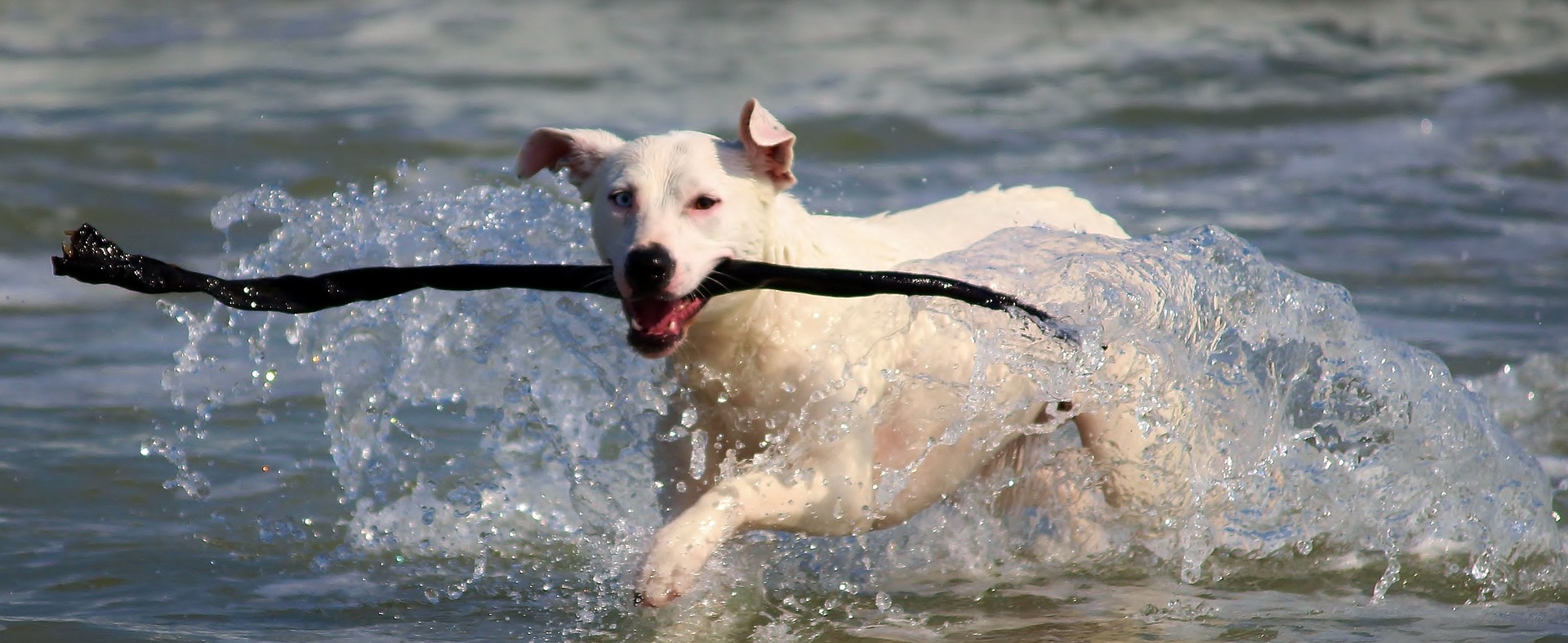Did you know that some dogs are more prone to ear infections than others? It's true. Floppy-eared dogs like Cocker Spaniels, Basset Hounds, and other long-eared dogs tend to have more ear infections than dogs with upright ears. So do dogs who swim a lot.
In both cases, it's because they have too much moisture trapped in their ears, leading to formation and growth of bacteria. Fortunately, dog ear infections are easily treatable. Let’s find out the three types of ear infections dogs get, the common reasons for them, and what the symptoms are so you know when to call your vet for an appointment.
What Are the Three Types of Canine Ear Infections?
According to the AKC, “There are three kinds of ear infections—otitis externa, media, and internal—affecting different parts of the canine ear. Otitis externa means that the inflammation affects the layer of cells lining the outer or external portion of the ear canal. Otitis media and interna refer to infections of the middle and inner ear canal, and they are most often are a result of the spread of infection from the external ear. These more advanced cases can be very serious, and could lead to deafness, facial paralysis, or signs of vestibular disease, such as head tilting, circling, and lack of coordination. That's why it is important to prevent and seek early treatment for ear problems.”
Besides the potential danger, you want your pup to feel better! Ear infections hurt. You know there are different types of ear infections and you know they're usually (but not always) caused by bacteria, so let's look at the details.
What Causes Canine Ear Infections?
As mentioned above, dogs like Cocker Spaniels, Basset Hounds, and other dogs with long ears covering their ear canals are among those who tend to experience ear infections.
Those droopy ears are cute, but there’s a downside.
Those ears are lined with hair which can trap moisture and debris inside of the ear. Plus, because the ears droop down, there isn't much opportunity for them to "air out." As you may know, if the ear doesn’t dry out, then bacteria can form. Obviously, that moisture risk includes the swimming dog population too, so if you have a swimmer, then you’re probably familiar with ear infections. In both cases, you can keep the hair trimmed around your dog's ears and that can help. For swimmers, there are some drying agents on the market for "after swim care"; you can ask your veterinarian for recommendations.

Bacteria are among a few different causes of dog ear infections: “Bacteria are the primary disease-causing agents that lead to infection and consequent inflammation of the middle or inner ear. Other possible disease-causing agents include yeasts such as Malassezia, fungi such as Aspergillus, and ear mites which increase the likelihood of bacterial infection. Alternate causes include trauma to the body, such as from a car accident, the presence of tumors or polyps in the ear, and the presence of foreign objects in the ear."
As you can see there are occasional reasons why an ear infection wouldn't be caused by bacteria. Your veterinarian will be able to evaluate and diagnose your dog to understand the cause and recommend a treatment.
Typical Dog Ear Infection Symptoms
If you're wondering how to recognize if your dog has an ear infection, then check out this helpful list of symptoms.
- Scratching of the ear or area around the ear
- Brown, yellow, or bloody discharge
- Odor in the ear
- Redness Swelling Crusts or scabs on inside of the outer ear
- Hair loss around the ear
- Rubbing of the ear and surrounding area on the floor or furniture
- Head shaking or head tilt
- Loss of balance
- Unusual eye movements
- Walking in circles
- Hearing loss
As you can see some of these symptoms seem more obvious than others. If your dog is pawing at his ears or shaking his head a lot more than usual, then take a quick peek at the ear. Is there a foul odor? Is it red? Either way, you'll want to bring your dog in for an evaluation.
Ear infections can happen quickly too, so don’t think it takes days to show up. Your dog can go from okay to suffering from a painful ear infection in just a few hours. Please don't hesitate to make an appointment.

